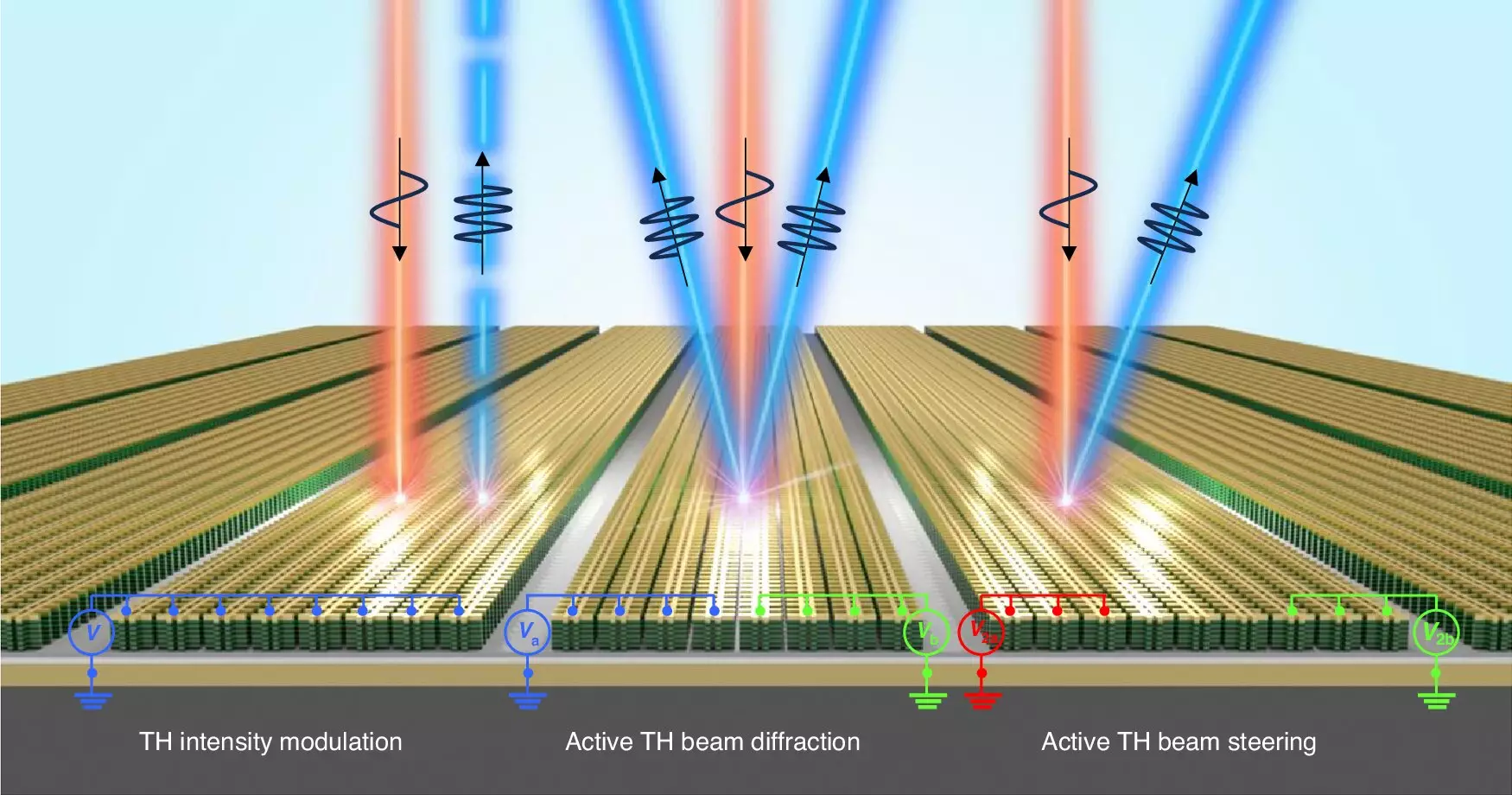Recent advancements in nonlinear optical metasurface technology have opened exciting avenues for the future of communication and medical diagnostics. Researchers have been diving into the minute structures that are smaller than the wavelength of light, known as metasurfaces. These innovations provide a platform for significant enhancements in the functioning of next-generation devices, particularly those that rely on quantum light sources and medical imaging techniques.
A Groundbreaking Study
In a pioneering effort led by Professor Jongwon Lee at UNIST’s Department of Electrical Engineering, a team has successfully created an experimental model of electrically tunable third-harmonic generation (THG). This groundbreaking work integrates intersubband polaritonic metasurfaces with multiple quantum wells (MQWs), culminating in a remarkable 450% modulation depth of the THG signal. The suppression of zero-order THG diffraction reached an impressive 86%, showcasing the capability for fine-tuning local phase shifts by more than 180 degrees. The implications are vast, emphasizing a step forward in the ability to steer THG beams via phase gradients.
The versatility of nonlinear optics lies in its ability to generate multiple wavelengths from a single source, thereby elevating the efficiency of information transmission compared to conventional single-wavelength lasers. A familiar example is the ubiquitous green laser pointer, exemplifying the practical impact of such technologies. The advancements made by Professor Lee’s team signify a pivotal moment where compact and lightweight optical devices can be realized, potentially evolving laser solutions to be as thin as a sheet of paper while utilizing materials even more delicate than human hair.
Historically, achieving electrical control over optical systems has been fraught with challenges. The newly developed metasurfaces exceed previous limitations, allowing for straightforward modulation of the nonlinearity. This transformation is monumental as it introduces the first-ever voltage-controlled second-harmonic generation (SHG), while also enabling the independent modulation of intensity and phase within the THG context. The ability to manage not just the wavelength but also the intensity and phase of light represents a monumental leap forward.
Professor Lee articulates the potential of this new technology succinctly, stating, “This advancement allows for unprecedented control of light.” The implications are vast—transforming the landscape of light modulation could provide new solutions for dynamic holography, cryptography, cutting-edge quantum sensors, and quantum communication systems. Researcher Seongjin Park further elucidates that the unique properties of this optical metasurface are deeply rooted in the design and composition of the semiconductor layers paired with metal structures. This intricate interplay is fundamental to the functionality and efficiency of these new optical devices.
The advances in nonlinear optical metasurface technology signify a transformative moment not only in optics but across various fields ranging from quantum communication to medical diagnostics. With the potential of controlling light in unprecedented ways and overcoming previous technological barriers, the future looks promising for these innovative instruments. As research progresses, we can anticipate a broad spectrum of applications that will harness these cutting-edge developments, fundamentally altering how light is manipulated in the modern world.


Leave a Reply